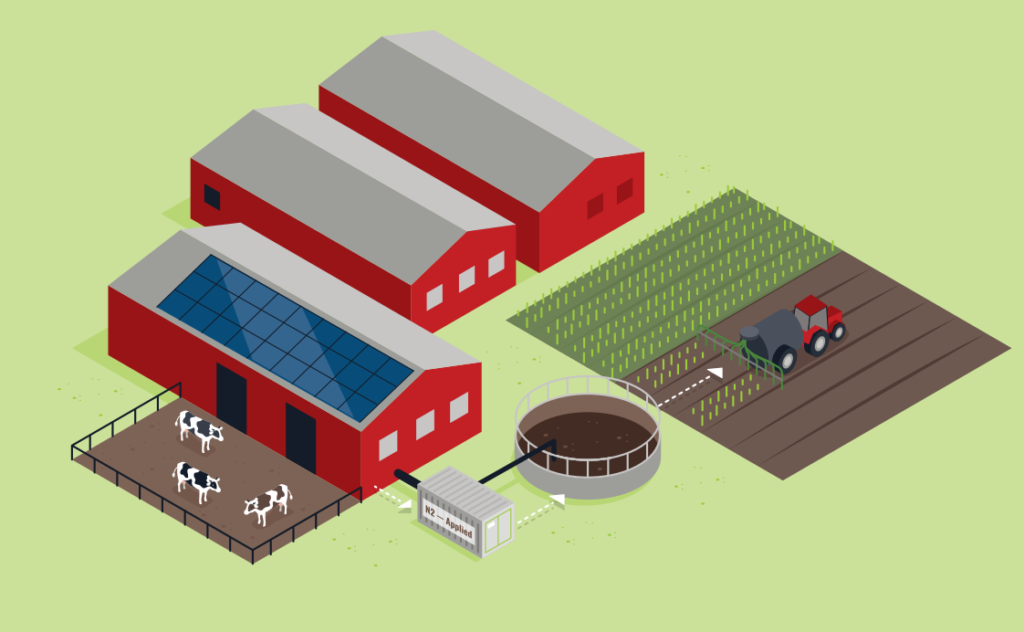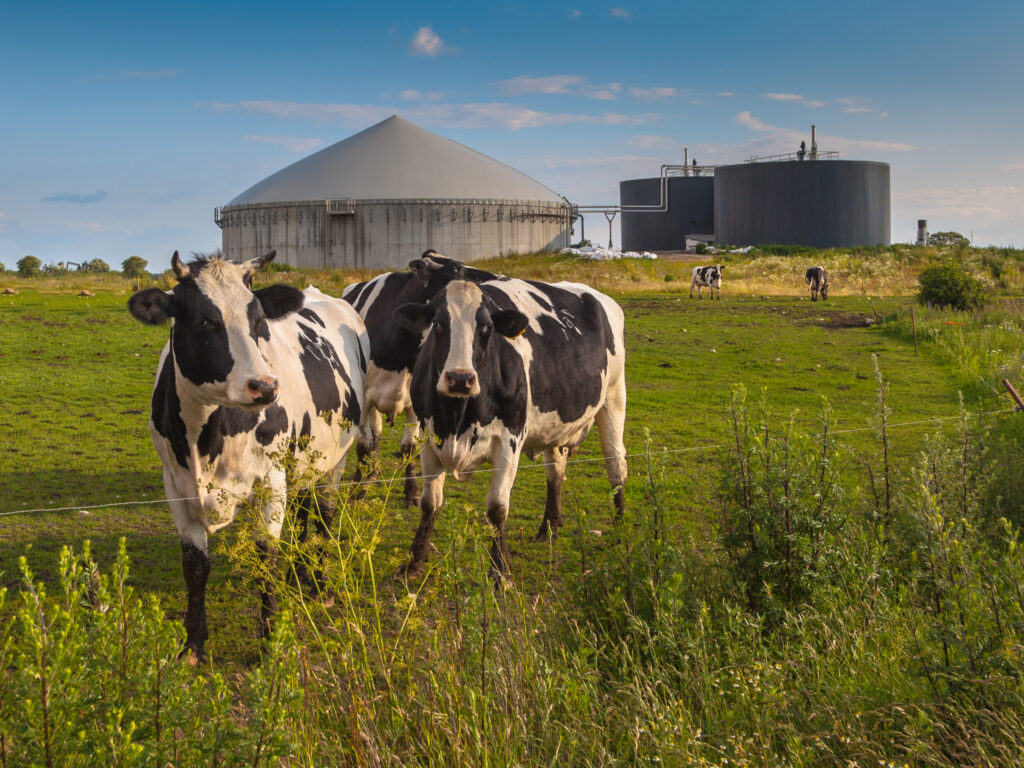N2 TECHNOLOGY
N2 Applied has developed a technology that enables local production of fertiliser using only livestock slurry, air and electricity, – dramatically reducing harmful emissions and improving yield at the same time. The technology adds nitrogen from the air into slurry, which increases the nitrogen content. The reaction prevents the loss of ammonia and eliminates methane emissions, making it a real solution helping to achieve climate target commitments on an industrial scale.
The end-product is a nitrogen enriched organic fertiliser (NEO), which has the same characteristics as normal slurry, but contains more nitrogen and significantly less emissions. It can still be spread using existing farm equipment, enabling farmers to improve their own food production, reduce the need for chemical fertiliser, and make farming more circular.
Easily Deployed at a FARM
The N2 Unit is a revolutionary piece of technology that is installed locally on a farm or biogas plant, to turn liquid manure into sustainable fertiliser using just air and electricity. It is the size of a container and is easily implemented into the infrastructure. Liquid manure is treated continuously prior to storage for application at the right time. A typical set up might be between the shed where livestock is kept and the manure storage.

USE CASES
Agri-Food industry
Consumers are more and more aware of environmental sustainability and are seeking brands that take action and commit to improving food production. Agri-food industry need to respond, identify solutions and implement measures to improve the sustainability of food production.
The N2 Applied technology answers the call for a better way to produce food, reducing the environmental impact and greenhouse gas emissions. The agri-food industry has the power and ability to increase the adaption of the solution, meeting consumer demands and their own sustainability targets.
LIVESTOCK FARMING
Farmers need solutions that improve their production and environmental footprint, combining environmental sustainability with financial sustainability. Liquid manure – known as slurry – could be an answer. Livestock slurry, is a natural fertiliser providing nutrients for plants and organic matter which improve soil health and enable better growth. However, the nitrogen content is too low for the optimum fertilisation of most crops, and the loss of nitrogen can be significant. This increase the need for chemical fertiliser, and the lost nitrogen also ends up as pollution in the form of ammonia. Manure management is also one of the major sources of greenhouse gas emissions in agriculture, particularly in the form of methane.
When livestock slurry is treated by the N2 Unit the loss of ammonia is prevented and methane emissions eliminated. In addition, more nitrogen directly captured from air is added, commonly doubling the plant-available nitrogen. The result is an improved fertiliser without nitrogen losses, which can be used more precisely and is delivering a significant improved environmental footprint. And by reducing emissions, air quality is also improved and the smell is reduced.
BIOGAS PLANTS
Biogas plants (anaerobic digesters) process different kinds of biomass, such as energy crops or organic waste from households, industry and agriculture, to produce a methane rich gas for energy purposes. A biproduct or waste is digestate, a potential fertiliser for agriculture.
Combing biogas and the N2 technology can increase the environmental benefits by upgrading the digestate and stop the remaining methane production and ammonia emissions. The N2 technology will typically double the nitrogen content and stabilise the digestate, turning it into a more powerful nitrogen fertiliser. The combination of the two technologies can also secure a good energy utilisation of the electricity and heat produced.



